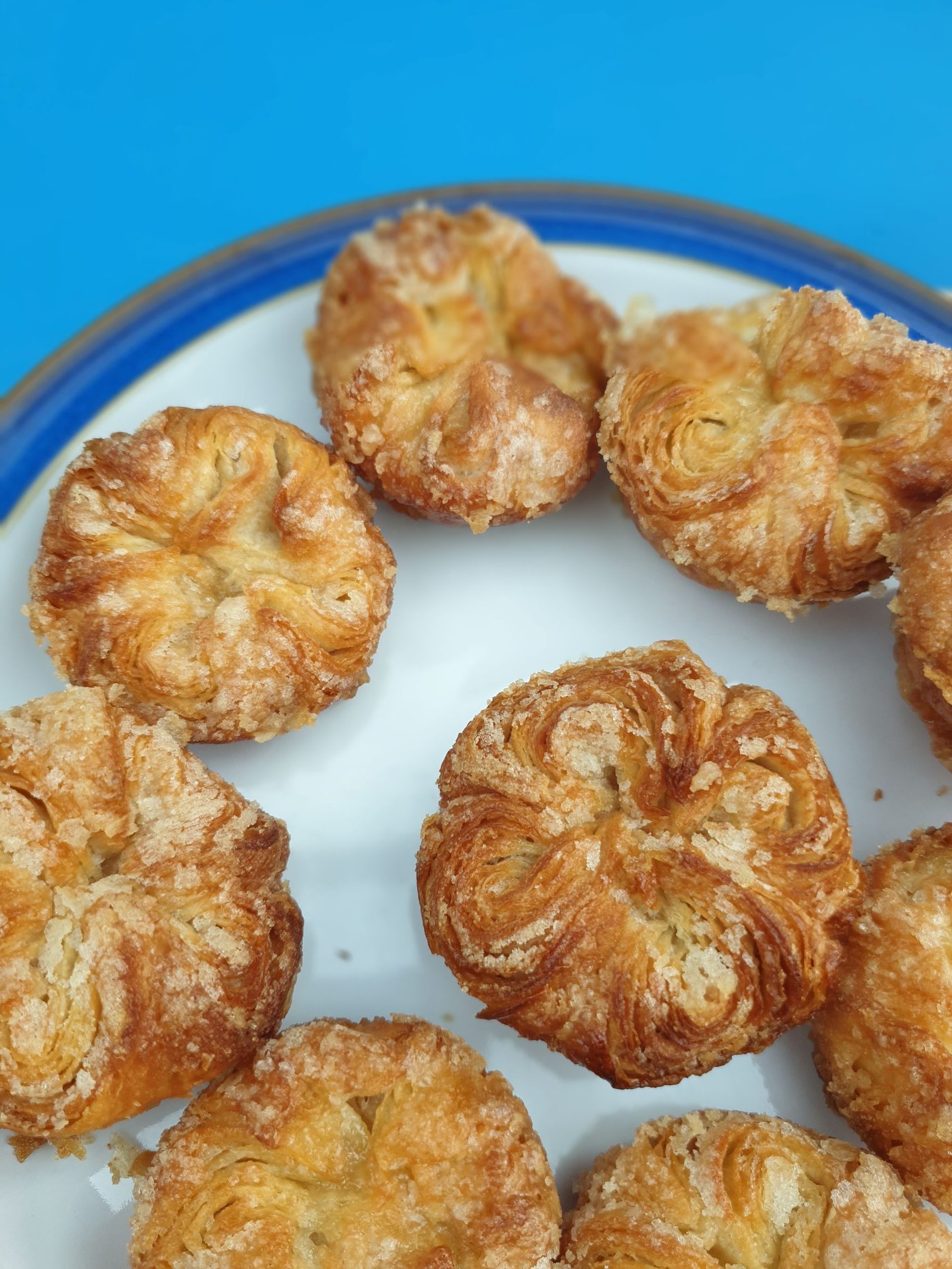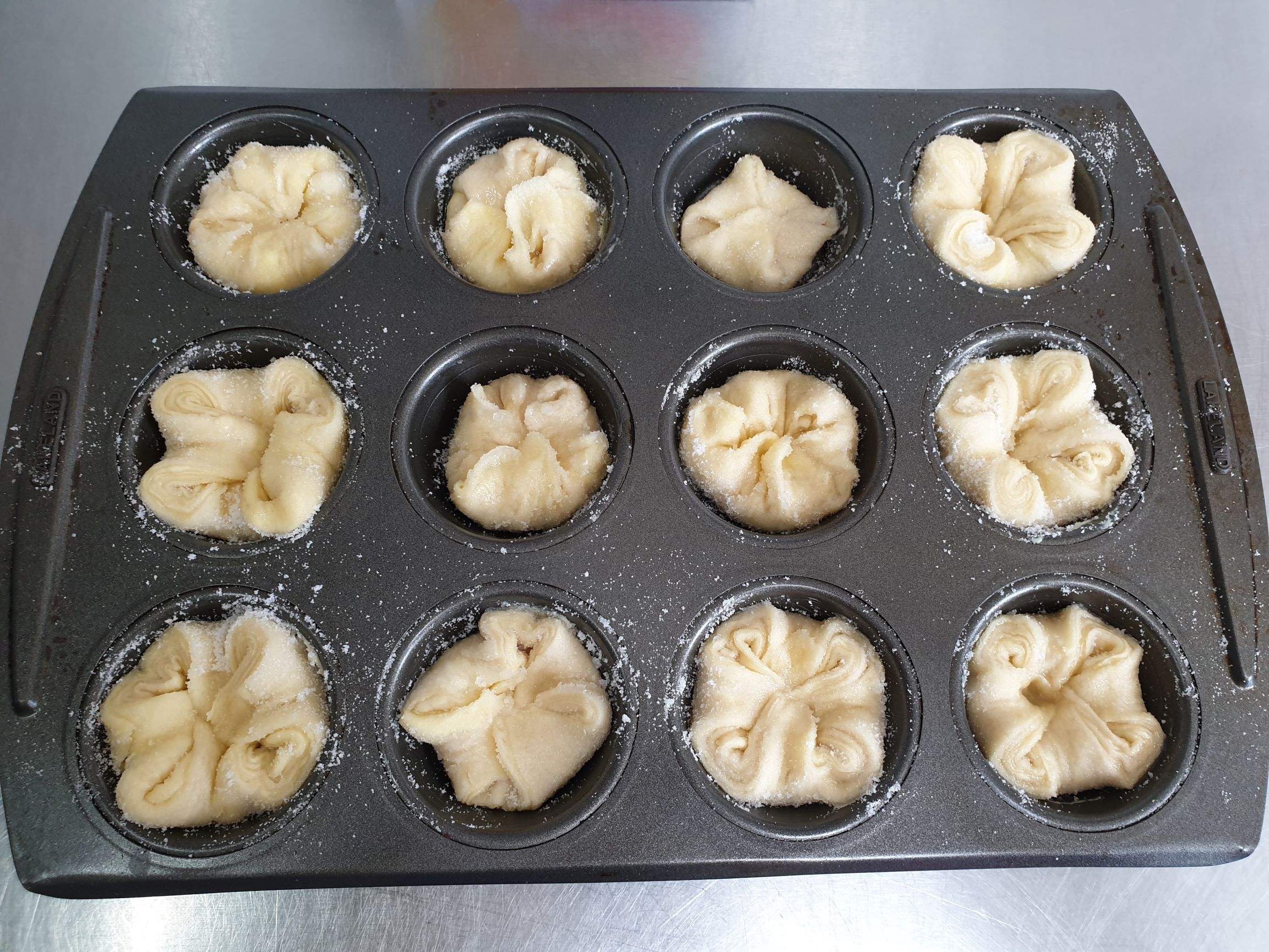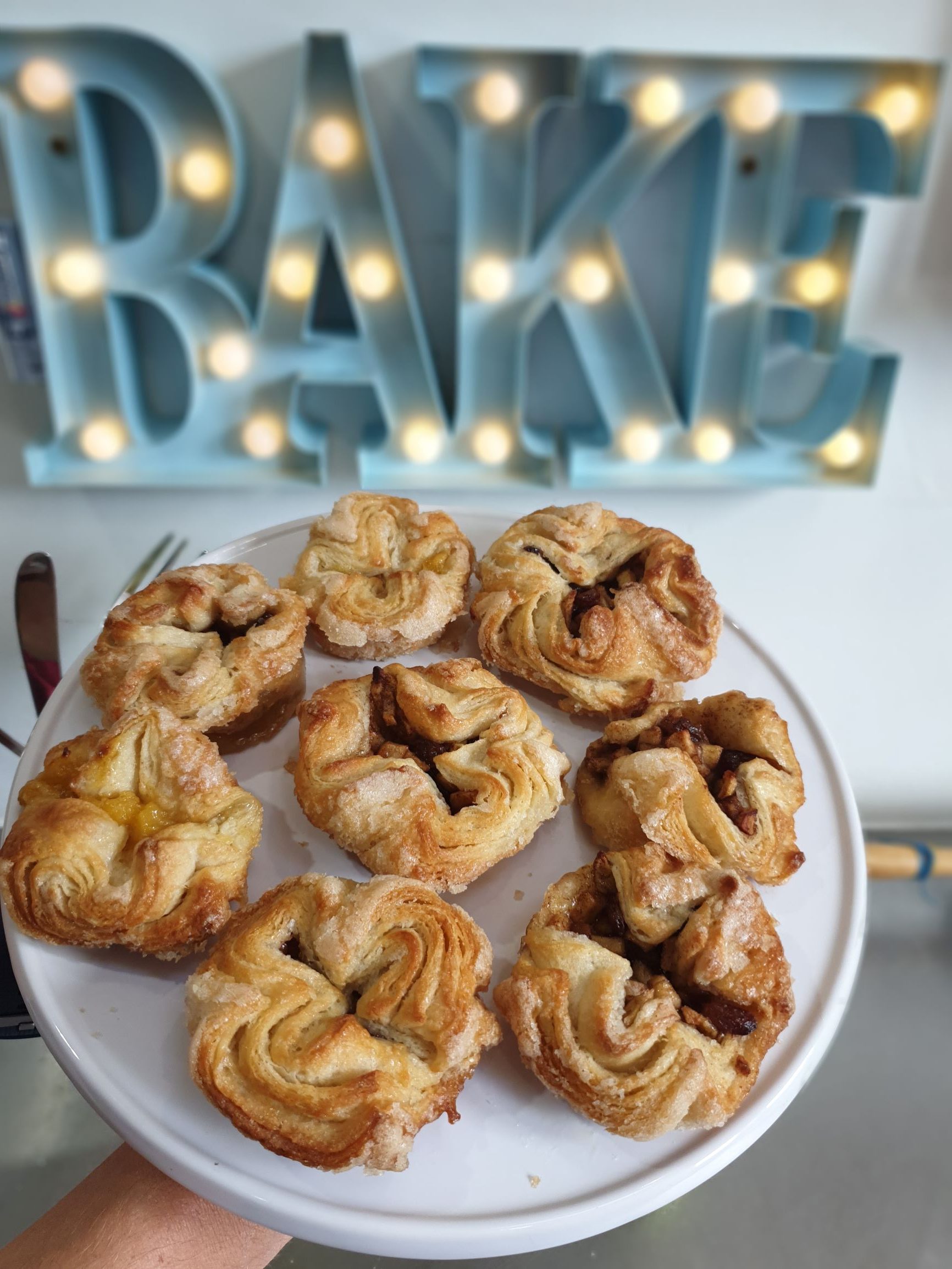You may know kouign amann from such programmes as The Great British Bake Off season 5, where none of the contestants (or viewers I might add!) knew what it was during the technical challenge, let alone how to pronounce it.
Kouign amann (pronounced ‘queen a-mahn’) is a pastry from Brittany. With kouign meaning cake and amann meaning butter, it’s not hard to see why the New York Times dubbed it the “fattiest pastry in all of Europe”. It is similar to puff pastry in that butter is folded into the layers; however, at a later stage sugar is also folded in.

It is believed to have been invented in 1860 in the town of Douarnenez. Legend has it that at the time flour was scarce and the sugar was used to make up for it. Butter however, was abundant in Brittany. It is traditionally baked as one large cake and sliced, but it is common to find small individual pastries nowadays. When baked, they puff up and the sugar caramelises, resulting in a crispy croissant-like pastry.
Translation
Lamination, or “feuilletage” is a key part of the kouign amann-making process. It’s where you create the layers of butter between the pastry which will melt during baking, releasing steam which will cause the pastry to puff up beautifully. This process is often described slightly differently in French, but if you know how to make it, it’s not hard to work out what the recipe actually means. The recipe asks for a “pliage en porte-feuille”, literally a wallet fold. This actually means folding into thirds, like a letter and is referred to as such in English puff pastry recipes.
When rolling out the pastry between folds, you are asked to “étalez sur la hauteur”, i.e. roll it upwards. The clearest way of describing this is to say “with the short end facing you, roll out…”. Translating doesn’t just mean saying what the text literally states, but it’s rendering the whole process intelligible to the end customer, i.e. the baker. Sometimes following pastry instructions originally written in English can be complicated enough, so it’s important so make it as clear as possible for the reader.
Levure de boulangere
The recipe calls for “baker’s yeast” which is confusing to say the least. In British baking we tend to use three different types of yeast: fresh yeast, dried active and instant. Hannah Lawrence provides an overview of them all in her blog. Given the small quantity of yeast and the fact that it does not need reconstituting with warm water and sugar, it refers to instant yeast here.
Baking
Baking was more straight-forward than I had first feared. It is essentially like making puff pastry but with a few extra folds with sugar instead of flour. You then cut the dough into squares and fold the edges in on themselves until forming a circle. I did this for a few, but then decided I preferred to just fold in four corners, producing what is considered the traditional shape for individual kouign amanns. The result was a crispy, caramelised all-buttery delight and I must confess that I made them twice within a few weeks, and both times I accidentally ate four in a row fresh from the oven! What can I say? They’re truly delicious.

My own versions
I decided to take this one step further and incorporate some additional flavours. Don’t get me wrong, I could easily eat a traditional kouign amann all day long. However, as the dominant flavours are butter and sugar, there is a lot to play with.
Apple pie kouign amann
In an attempt to work my way through this season’s bumper crop of apples, I created an apple pie-style kouign amann by simmering chopped apple in butter, sugar and lemon juice, and stirring in sultanas and cinnamon. I placed roughly a tablespoon of the filling in the centre of the square before folding in the corners.
Dulce de leche
For this one I cheated and used ready-made dulce de leche, but you can easily make it from condensed milk or use caramel instead. After folding in the edges, I dolloped a spoonful right in the centre. Before serving, I sprinkled with some fleur de sel to balance out the sweetness. Learn more about fleur de sel here.
Apple and mango puree
I decided to try out an apple and mango puree filling. However, this was less appetising than the previous two fillings and I wouldn’t recommend it.

Overall
Overall impressions are:
- Exceeds expectations;
- Should come with a warning: may cause addiction/overeating;
- Go wild with your own interpretations.
This was similar to the viennoiserie pastry I made for my walnut pain aux raisins. See here to read all about it.



